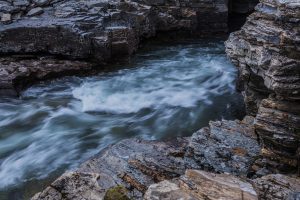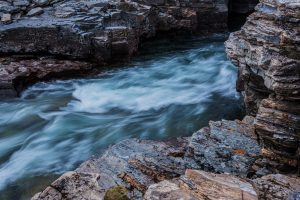 Image 3. Canon 5D III, Canon 24-70mm @45mm, ISO-500, f/10, 1/2s
Image 3. Canon 5D III, Canon 24-70mm @45mm, ISO-500, f/10, 1/2s
 Image 4. Canon 5D III, Canon 24-70mm @45mm, ISO-200, f/9, 1s
Image 4. Canon 5D III, Canon 24-70mm @45mm, ISO-200, f/9, 1s
 Image 5. Canon 5D III, Canon 24-70mm at 45mm, ISO-100, f/8, 2s
Image 5. Canon 5D III, Canon 24-70mm at 45mm, ISO-100, f/8, 2s
In Image 3, 4 and 5, when the shutter speed increase to 1/2, 1 and 2 seconds, respectively, the shutter speed is long enough to make the short streaks joining each other becoming longer streaks, rendering the water less chaotic. This is the favorite shutter speed setting for many landscape photographers because the water looks extremely dynamic. The streaks of water, i.e. the lines, create sense of direction, as you can visually feel that the water is flowing from upper right to lower left. This sense of direction results in the visual perception of dynamism. You feel the water is moving, not stationary.
 Image 6. Canon 5D III, Canon 24-70mm at 45mm, ISO-100, f/16, 5s
Image 6. Canon 5D III, Canon 24-70mm at 45mm, ISO-100, f/16, 5s
 Image 7. Canon 5D III, Canon 24-70mm at 45mm, NiSi 3-stops ND, ISO-100, f/18, 10s
Image 7. Canon 5D III, Canon 24-70mm at 45mm, NiSi 3-stops ND, ISO-100, f/18, 10s
 Image 8. Canon 5D III, Canon 24-70mm at 45mm, NiSi 3-stops ND, ISO-100, f/22, 15s
Image 8. Canon 5D III, Canon 24-70mm at 45mm, NiSi 3-stops ND, ISO-100, f/22, 15s
 Image 9. Canon 5D III, Canon 24-70mm at 45mm, NiSi 6-stops ND, ISO-200, f/10, 30s
Image 9. Canon 5D III, Canon 24-70mm at 45mm, NiSi 6-stops ND, ISO-200, f/10, 30s
In Image 6, when the shutter speed increased to 5 seconds, the shutter speed is longer so the water streak is gradually disappearing because the continuous flow of water smoothens them over the time. In Image 7, when the shutter speed increased to 10 seconds, the water streaks are almost fully disappeared and the water is becoming smooth and creamy. In Image 8 and 9, when the shutter speed increased to 15 and 20 seconds, respectively, the streaks are completely gone and water is absolutely smooth and creamy. The smoothen water lead to the visual feeling of static because there is no detail in the water and you don’t feel any movement. This in turn create the visual perception of unreal, dreamy and tranquility.
That’s being said, photographing waterscape does not need ridiculously long exposure time. To make the water looks flowing and dynamic, you just need the exposure time of 1/2 to 2 seconds. To make the water looks smooth and dreamy, you just need exposure time of 10 to 20 seconds. As simple as that!
Sometimes, when the light is too strong to use slower exposure, a 3-stops or a 6-stops ND filters come in handy in slowing down the exposure time. In certain situation, even a polarizer (with 1.5 to 2 stops depend on the brand) will do well in slightly slowing down the exposure time, at the same time to decrease the reflection of the water and the wet rocks.



